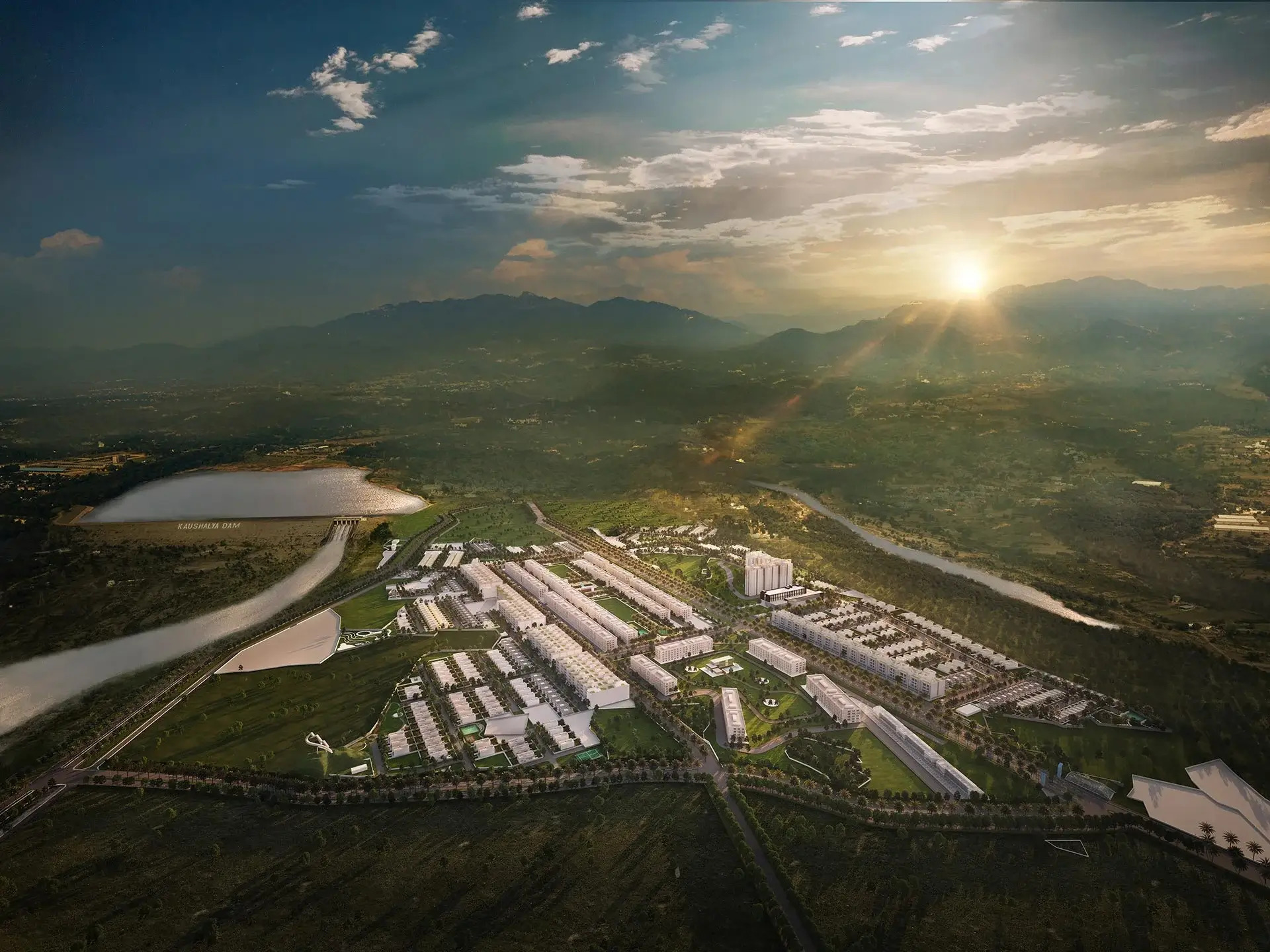
Blog
We keep you up to date on the most recent real estate news and events.
Land as Legacy: Why Plotted Living Retains Premium Across Market Cycles
Plotted living is the quiet classic of Indian real estate. Apartments come and go in waves of architecture and amenities, but land keeps doing what it has always done—holding value, growing with a city’s edges, and passing down cleanly as legacy. When market cycles heat and cool, it is land that carries the older, steadier rhythm of appreciation, especially in well-located, amenitised townships that add infrastructure and legal clarity to the mix. This is why plotted formats have re-entered centre stage in 2024–25, with both demand and developer focus shifting toward limited, serviced plots in growth corridors across metros and Tier‑II cities alike.
The address that ages well
Every family has a story of a plot purchased decades ago on a dusty peripheral road that is now a landmark address. That “compounding of location” happens because cities don’t just densify upward; they expand outward with infrastructure—ring roads, metro lines, airports, IT corridors. The one asset that can absorb that expansion without fighting building obsolescence is a plot of land. In India’s current cycle, that instinct is being validated at scale as plotted supply and capital flow back toward land-led formats.
Why land outperforms across cycles
- Structural scarcity: New towers can be added to a skyline; new land cannot be added to a micro‑market. Scarcity supports long‑run price floors, especially where infrastructure creates new “edge centres” over time.
- No building depreciation: Apartments carry a building that ages—lifts, façades, MEP systems—often pulling down net real returns after maintenance and refresh cycles; a plot has negligible structural depreciation until construction, preserving intrinsic value better through slowdowns.
- Optionality premium: A plot lets owners time construction, upgrade design standards with each generation, and adapt to by‑law changes. This control shows up in resale liquidity during upswings, when buyers prize autonomy and flexibility.
What recent cycles signal
- Market-wide demand is healthy: Residential sales across the top 8 cities hit a 12‑year high of roughly 3.5 lakh units in 2024, with premium ticket sizes contributing meaningfully to momentum—evidence that upper‑end housing appetite remains firm, which supports interest in premium plotted formats too.
- Prices are rising, but unevenly: The RBI’s House Price Index (HPI) shows all‑India home prices up about 3–4% YoY in Q3 FY24–Q1 FY25, with wide city variation—underscoring how micro‑location selection drives outcomes, and why top‑tier plotted corridors on infrastructure routes can significantly exceed averages.
- Plotted development is surging: Developers acquired over 2,300 acres across 23 cities in 2024, with more than a third designated for plotted or low‑rise residential projects—clear evidence of institutional confidence in land‑led formats and their faster cash cycles.
Note: The RBI HPI and NHB RESIDEX track housing prices (largely apartment transactions) across major cities; when plotted, corridors outperform apartments, it usually correlates with new infrastructure nodes (airports, ring roads) and amenitised township launches—factors a city‑level index averages out.
Plots vs apartments: how appreciation differs
- Land-led compounding: In growth corridors (airport spines, ring roads), reputable sources have reported plots in select growth corridors near airports and ring roads have doubled over 4 years (TOI).
- Apartment appreciation caps: Apartments can appreciate strongly when supply is tight and amenities are top‑tier, but over time, building age and association costs create drag. The land share in apartment value is smaller than in a plot, so compounding is diluted by structure depreciation.
- Liquidity under stress: In slowdowns, distressed sellers often find land retains inquiry and negotiability better than ageing apartments. Resale buyers discount older towers for upcoming capital expenditures; plots can transact based on location merit alone.
The amenitised plot advantage
The “new‑age” plot is not a standalone parcel but a RERA‑registered plotted township with internal roads, stormwater, power, street lighting, parks and a clubhouse. This hybrid format marries land’s appreciation logic with apartment‑like convenience—raising both liveability and exit liquidity.
- Faster life-cycle value: Serviced plots in integrated townships begin appreciating from handover because the address is already “livable”—owners can construct, rent, or hold with lower friction.
- FM and design codes: Streetscape controls, facility management, and by‑laws keep neighbourhood quality intact—critical to premium retention, which standalone plots often struggle to maintain.
- RERA protections: Registration, escrow of 70% collections, mandatory disclosure of approvals and timelines create buyer confidence and reduce execution risk—especially important for first‑time plot buyers.
Demand drivers in 2024–25
- Premium segment strength: Knight Frank’s H1 2024 review shows top‑end segments driving volumes, reflecting improved affordability for well‑heeled buyers who often prefer customisable homes on land or low‑rise formats within secure precincts.
- Capital rotation by developers: With quicker sales cycles and lower construction risk, many established developers increased allocation to plotted/low‑rise launches; this realigns supply with the structurally stronger asset—land.
- Tier‑II momentum: The plotted story is no longer only a metro outskirts play; Tier‑II cities with new industrial corridors and airport upgrades have seen brisk plotted launches and absorption, indicating a widening buyer base for land ownership.
Risk and resilience: how plots hold up
- Cycle resilience: In tightening credit or slower absorption phases, developers can pace plotted releases and amenity build‑out, preserving pricing power better than high‑capex apartment towers bound to delivery schedules.
- Input cost pass‑through: Inflation in land/infra costs passes more cleanly into plot pricing; meanwhile, apartment margins can compress due to fixed construction contracts and upgrade expectations.
- Downside floors: Well‑situated plots in amenitised townships tend to observe fewer distress discounts because the buyer universe includes both end‑users and investors who value optionality and control.
The regulatory angle buyers should use
- Verify RERA registration: Any plotted scheme with internal infra and marketed amenities must register with State RERA. Use the official portal to check the project number, layout approvals, escrow details and timelines before tokening.
- Understand plotted exemptions: Narrow exceptions exist where a promoter sells demarcated plots with approvals but without shared amenities; however, township‑style plotted projects are typically under RERA—buyers should prefer the certainty that registration affords
- RERA as price signal: Registration and disclosures correlate with better delivery discipline and resale confidence, which supports long‑run premium retention.
Apartment strengths—and where they win
A balanced view matters. Apartments excel in central locations where land is prohibitively scarce, in projects with exceptional amenities and brand cachet, and for buyers seeking immediate, turnkey living. In prime cores, blue‑chip towers can appreciate handsomely, sometimes outperforming peripheral plotted assets. But on a like‑for‑like basis in growth corridors, land usually compounds better over long horizons because the appreciation is less capped by structure age and more leveraged to location re‑rating.
How to pick plots that retain premium
- Follow infrastructure: Corridors tied to airports, metro extensions, ring roads and IT/industrial nodes tend to re‑rate faster; plots near these spines show stronger multi‑cycle appreciation than undifferentiated peri‑urban land.
- Prefer amenitised townships: Internal roads, drainage, power, lighting, parks and a functioning clubhouse mitigate holding costs and enhance liveability—critical for both end‑use and resale.
- Check legal hygiene: Title reports, mutation status, layout sanction, and encumbrance checks are non‑negotiable. Cross‑verify on the RERA portal and ask for escrow details and development milestones.
- Street and frontage quality: Corner or park‑facing plots with wider frontage and controlled opposite frontage enjoy better light, privacy and resale desirability.
- Read the FM fine print: Facility management scope (security, landscaping, lighting, stormwater maintenance) preserves neighbourhood quality and pricing power.
Building on land: protecting the legacy
- Time construction smartly: Owners can stage investment according to market cycles and personal goals—an advantage that apartments cannot offer. Phase the build when credit is favourable and materials stabilise.
- Design for longevity: Timeless façades, cross‑ventilation, deep verandahs and shaded courts keep operating costs low and resale wide; avoid over‑personalisation that narrows future buyer appeal.
- Keep paperwork pristine: Updated khata/mutation, up‑to‑date taxes and association dues ensure clean exits; buyers pay a premium for hassle‑free transfer.
Why legacy matters in Indian families
Plots are more than assets; they are emotional anchors across generations. In Indian families, a piece of land often becomes the foundation for a first home, a second income, or a long-term inheritance. Unlike apartments that face obsolescence, a well-located plot stays adaptable. Each generation can decide whether to build afresh, lease, or simply hold as values climb. This flexibility ensures that the asset doesn’t just survive market cycles but thrives through them, maintaining relevance as cities grow and lifestyles evolve.
The conclusion in plain terms
Apartments deliver convenience and address prestige, especially in tight prime cores. But if the goal is inter‑generational wealth, control over the home canvas, and appreciation that rides city‑building rather than battles building age, plotted living is the enduring classic. In India’s 2024–25 market, where premium demand is resilient and developers are increasing plotted allocations, land’s reputation as a legacy asset is not nostalgia, it’s strategy playing out again in real time.
Interested in investing in plots? Central Vista at Trident Hills, Panchkula, offers that strategy in practice—serviced plots inside a ~200‑acre, township with wide internal roads, landscaped greens and a destination clubhouse, all set along the Shivalik foothill belt that keeps views and weekend escapes close at hand.
Sources with links
- Knight Frank India—India Real Estate H1 2024: sales momentum, premium segment strength and market context. https://content.knightfrank.com/research/2855/documents/en/india-real-estate-residential-and-office-market-h1-2024-11307.pdf.knightfrank
- Business Standard—Housing sales in 2024 across top 8 cities; premium ticket sizes leading demand. https://www.business-standard.com/industry/news/housing-sales-up-7-in-2024-across-top-8-cities-at-350k-units-knight-frank-125010700454_1.html.business-standard
- Times of India—Developers purchasing >2,300 acres in 2024; 38% allocated to plotted/low‑rise; plotted demand drivers and pricing notes (citing JLL/ET). https://timesofindia.indiatimes.com/real-estate-trends-homebuyers-opting-for-plotted-deals-developments-as-land-prices-climb/articleshow/122853226.cms.timesofindia.indiatimes
- RBI—All‑India House Price Index growth (3–4% y‑o‑y) and city variance; methodology and DBIE access. https://rbi.org.in/Scripts/BS_PressReleaseDisplay.aspx?prid=57392 and Business Standard summary: https://www.business-standard.com/economy/news/house-price-index-rises-3-1-in-third-quarter-of-fy25-shows-rbi-data-125022701022_1.html.rbi+1
- NHB RESIDEX—About and methodology overview for India’s official housing price index suite. https://residex.nhbonline.org.in/About-Residex.aspx and white paper: https://www.nhb.org.in/wp-content/uploads/2023/12/WHITE-PAPER-NHB-RESIDEX-METHODOLOGY.pdf.nhb+1
- RERA—Official Act text; plotted townships’ registration, escrow, disclosure; buyer protections. https://www.up-rera.in/pdf/reraact.pdf and practical guidance on plotted RERA coverage: https://lawbhoomi.com/is-rera-approval-mandatory-for-plots/ and overview of plotted applicability nuances: https://www.mondaq.com/india/real-estate/894500/plotted-development-rera-applicability.mondaq+2
- Gated community advantages (amenities, FM, security, design coherence) in India’s township context. https://www.sobha.com/blog/gated-community-living-india-guide/.sobha
- Tier‑II plotted momentum and capital flows (PropEquity/industry summaries). https://www.aurumproptech.in/pulse/media/tier-2-cities-boost-plot-investment-boom-in-india-real-estate.aurumproptech